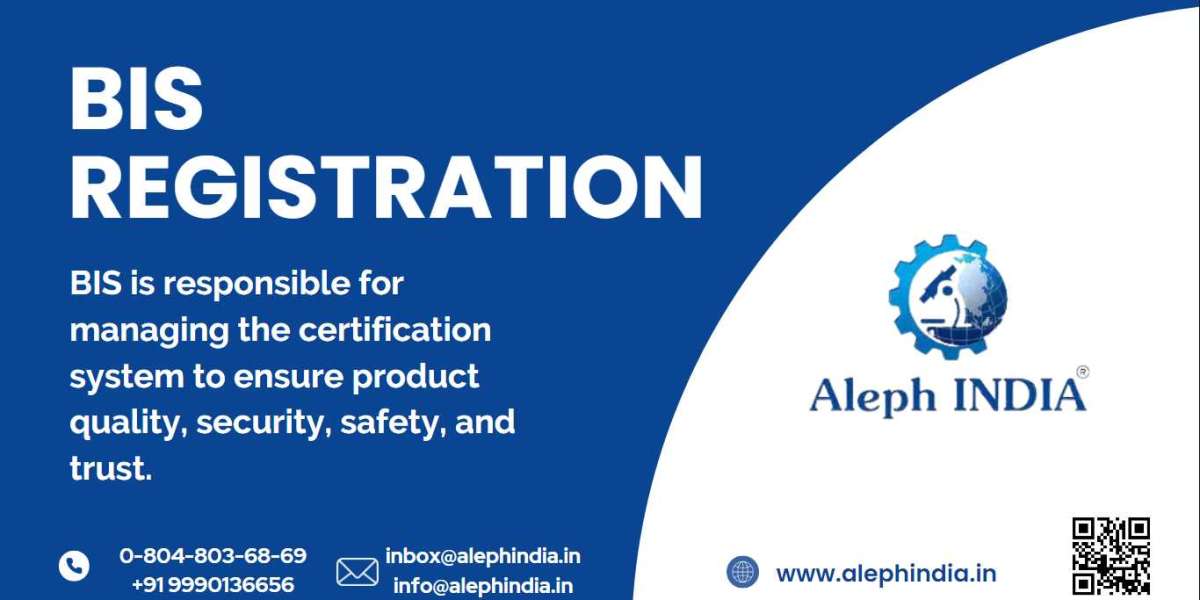In today's globalized world, trade barriers can pose challenges for manufacturers looking to sell their products in India. One such barrier is the requirement of Bureau of Indian Standards (BIS) registration. Understanding the significance and process of obtaining BIS certification is essential for manufacturers to ensure compliance with quality standards and regulations. In this blog, we will explore the aim of BIS registration, the steps involved in the certification process, and the timeline for completing the procedure.
The Aim of Obtaining BIS Registration
The Bureau of Indian Standards, established under the BIS Act of 1986, plays a crucial role in safeguarding public health and safety. The primary aim of obtaining BIS registration is to meet the quality standards set by the organization. For foreign manufacturers, BIS certification enables them to sell their goods in the Indian market, ensuring that their products adhere to Indian standards. By obtaining BIS registration, manufacturers demonstrate their commitment to producing safe, reliable, and high-quality products.
Steps to BIS Certification
The BIS certification process involves different schemes based on the type of product. Indian manufacturers can obtain BIS certification under the Product Certification Scheme, while manufacturers of Electronics and IT Products can obtain it under the Compulsory Registration Scheme (BIS CRS). Foreign manufacturers can appoint an Authorized Indian Representative (AIR) who will oversee the documentation and certification process on their behalf.
BIS Registration Process under Compulsory Registration Scheme (CRS Scheme)
- Submission of sample: Manufacturers need to submit a product sample to a BIS recognized testing lab along with the required fees.
- Testing process: The sample undergoes testing, which typically takes 10-15 days. The lab issues a Test Report after thorough examination.
- Application submission: The test report, application, and relevant documents are submitted through the BIS portal. Queries, if any, are addressed via email.
- License issuance: After scrutinizing the application, documents, and test report, BIS grants the license.
Product Certification Scheme (ISI Mark Certification)
- Application and documentation: Manufacturers fill out the application form and submit the necessary documents on the BIS portal.
- Scrutiny and audit: BIS officials review the application and documents and conduct a factory audit using an appointed auditor.
- Testing: A product sample is drawn from a BIS recognized laboratory for testing.
- License granting: If the sample test report complies with the required Indian standards, BIS initiates the license granting process.
BIS Hallmarking Registration Process
- Documentation: Manufacturers complete the necessary documentation before submitting the application.
- Online portal generation: An online portal is generated on the BIS website.
- Application submission: The application, documents, and fees are submitted through the BIS Manak online portal.
- Scrutiny and license grant: BIS officials scrutinize the application and documents before granting the BIS hallmarking license.
The Timeline of the BIS Registration Process
The entire BIS registration procedure, including testing, typically takes around thirty to forty days. However, the timeline can be shortened when the manufacturer and the BIS registration team collaborate effectively. Transparency, honesty, and timely communication are crucial throughout the process to ensure a smooth and efficient experience for clients.
Conclusion
Navigating the BIS registration process is vital for manufacturers looking to sell their products in India. Understanding the aim, steps, and timeline involved in obtaining BIS certification enables manufacturers to meet quality standards and comply with regulations. By embracing the BIS registration process, manufacturers can not only gain access to the Indian market but also demonstrate their commitment to delivering safe and high-quality products to consumers.








